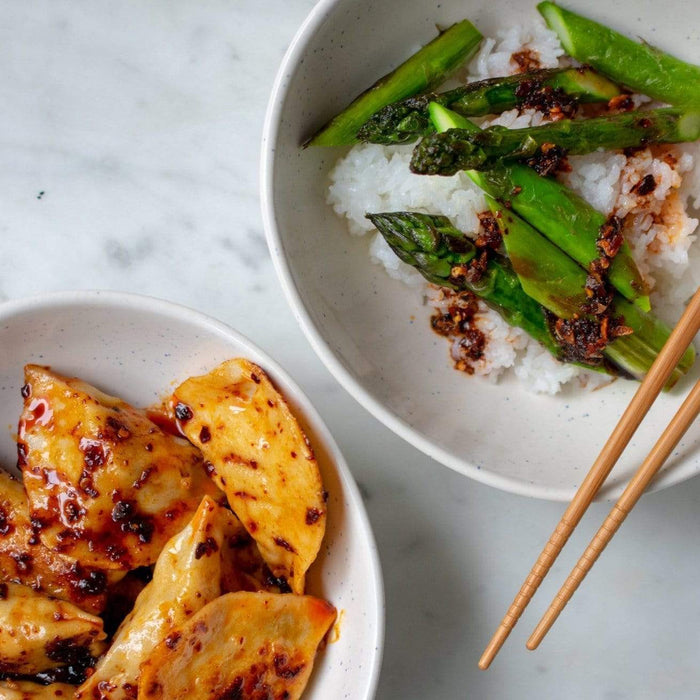

I’ve been told no probably a thousand times in this process. Incredibly, that was just three years ago, and today, our sauces are shipped to over 50,000 customers in every state in the US. I instantly thought of packaging it, but felt daunted by the unthinkable task of manufacturing and building an entire company around the product. In my kitchen in Shanghai, I had just finished blending a batch of chili oil in my food processor. When was the first time you remember tasting the Sichuan Chili Crisp that has become one of your signatures? The sauces we sell now are even better than the original that I cooked it up in my kitchen two years ago, and that makes it all worth it. I learned that the only way to get the results I wanted was to boldly advocate for myself.
#Fly by jing chili crunch full#
The journey from making chili crisp in my home kitchen to production in rural Sichuan and finally shipping the first jar out was long and full of challenges.

What was it like getting your condiments produced in Sichuan? I knew it was an uphill battle against centuries of false narratives about Chinese cuisine, but it was worth it if we could take back this narrative, help redefine it and show people just how high quality Chinese food can be. I decided to launch my business in the US with the spices and condiments I was creating in my kitchen and make these flavors more accessible to everyone.
#Fly by jing chili crunch upgrade#
When I went back to Shanghai, I knew it was time to upgrade my suitcases packed with ingredients to something bigger.

I was shocked that entire groups of people were being left out of healthy eating, and also by the size of the missed opportunity, as this was clearly not representative of what America looks like or how it eats. Not surprisingly, there was even less diversity among the buyers and retailers walking the halls, arguably the gatekeepers of healthy eating in America. I spent days visiting thousands of stalls at the overwhelmingly large show, but could recall just a handful of Asian food brands by the end. In 2018, I traveled to California to attend Expo West, the largest natural food show in the US. Many were surprised that these nuanced flavors existed in Sichuan cuisine (often caricatured to be intensely spicy and single note) and most had never even heard of some of these ingredients. Manufacturers had no incentive to export high quality products when they were repeatedly told the market wouldn’t pay more than basement bottom prices for them.īut whether it was New York, Tokyo or Sydney, people instantly connected to the food. I understood why -there was little demand from the West stemming from a lack of awareness, and moreover, hundreds of years of bias against the cuisine and its people.Ĭhinese food ranks on the lowest rungs of what’s known as the ‘Hierarchy of Taste’, society’s judgement of a cuisine’s value based on the socio-economic status of its people. Whenever I went on the road to host a pop up dinner, my bags were packed full of high-quality ingredients that I couldn’t get anywhere but China. I was born in Chengdu but raised all over the world, and have spent the past ten years in Asia where I founded an award-winning restaurant and an underground pop up dining concept inspired by the popular ‘fly restaurants’ of Chengdu, hole-in-the-wall eateries so good they’re said to attract people like flies.įly By Jing, in its current form as a spice and condiment company, really started in a few suitcases. Jing Gao When did you come up with the idea for Fly By Jing?


 0 kommentar(er)
0 kommentar(er)
